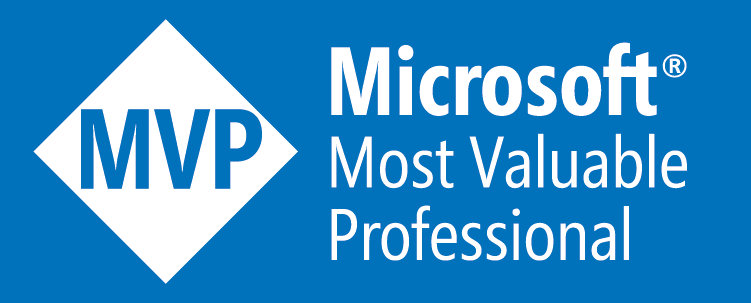Self-Motivation - Invest in Yourself
Investing in yourself is one of the greatest ways to push yourself and your own boundaries in order to back up the old saying of “if you want something done then do it yourself”.
For example, the motivation for my career starts from when I was around 11 years old when I had got my first computer and the real mission there was just learn how to type - fast! Having your hands positioned in the correct way and having fingers going to the correct keys
at the time the Operating System was Windows 95 just to paint a picture, as well as a Floppy Drive abused by 1000 disks of IBM voice type and 128mb of RAM. Eventually the PC would either get slow, develop crashing patterns or hardware problems and at the time we didn't have any local computer repair shops that we could go to, so we went to the newspapers to look at premium line numbers which had IT support specialists.
After a few long calls with them eventually I started to pick up the troubleshooting tips and developed an interest into how the PC worked even more to the point I could now fix these issues and really took off from there. Funny thing was my typing eventually took a life of its own and didn't even notice!
From there I self-taught myself a lot of computers with the mixture of what I was learning in school and college until I decided I wanted to know more about computers in a more technical way rather than just the theoretical side so I took out a specialist type loan called a CDL (Career Development Loan) which I believe is extinct now, and used this to fund a private course at a place called Just-it when I was 18, and this only ignited the motivation even more. It was literally dripping with knowledge that I was hungry for and after a 5 minute preview of one of the classes I knew right from there that was what I wanted to do.
From there I developed a pattern to obtain as many IT
certifications as I could which made sense as in order for me to rise up in the
ranks I had to do more than just ask, I had to prove it, and was passing 3
exams a year up until 2014. In order for me to feel and understand the risk of
passing and failing and really investing in myself, I paid for all of the exams
that I took from when I had my first IT job. I thought that with me putting up
the cost I wasn't betting but investing in myself as I was just that confident
that I would not fail, or at least I'd better not fail
The same for me went it came to IT courses and Instructor LED courses, any technologies which I wanted to conquer or develop more on I had funded these myself. Backed up by training Labs which I had built and had again invested in a custom built PC which had enough juice to build a sizeable lab that I needed.
My mind frame was that if someone else had funded the exams & courses it wouldn't contain the same push, pressure or motivation to succeed as if you fail the risk factor was minimized because it didn't cost you anything to get to that point, but if it's you that puts the costs up then you feel the real pressure and creates the scenario to see how passionate you really are to succeed, thus reaping greater rewards when you do.
There were times that I did fail an exam and whilst the feeling is horrible (not to mention being told in your face after a couple of seconds after a click of a button, then froze, then said failed!) it's something you have to feel as it's a test to see how will you bounce back and get back up, what will you do different to change the outcome of this.
If you really want to do something or interested in anything don't wait for something to just appear if you want to do something then the best way to do it is to do it yourself and invest in yourself by putting your own money up.
If you “if and but” on whether you should… just do it, or time will just fly and by that time the opportunity will either disappear or you just won't do it and I feel that means you won’t do it if you “if and but” about it, having the same thoughts months or even years later.
Just do it and deal with either the consequences or hurdles after.
Similar to someone falling in water who cannot swim, in order to survive you would need to learn right now at that moment, but of course you don't have to and you do have the option to drown. And I have been in these situations myself (as well as actual water). Both scenarios require you to be relaxed under pressure as if the mind is clouded you will not think straight and once struggle and tension starts you will buckle under pressure.
To me there is no such thing as “I have no choice” or “it was my only option”. You have every option and can even create an option. Having an idea is the easiest part but very few get to execute it to turn it into a reality
Whilst in permanent roles I always asked if whether I could be put on a course or if there was any training or career progression but I say why should you depend on an organization to motivate your career If you are not, and if they don't provide you with anything then do you just not do anything? If i thought like this then I wouldn’t have had any motivation to pick up a book or study or create a training lab to do anything. If you want to learn something you have the ability to do this at any time, the only thing it can really cost is time and effort and that investment can make all the difference. If they don't do it show initiative and prove why you want to be at a certain position.
Some say it's not that easy to just pick up and do something for various reasons, I say it is that easy. I don't consider myself to be any smarter than anybody else and don't have any more of an advantage or head start, but just a real drive in doing something which you would do for free. You will reap the rewards in the long run as investing in yourself is fundamental in any kind of entrepreneurial ship. Whether starting your own business or in any kind of job position the person who is in charge of their career is you, and the salary which you receive is not the money, it's the experience which you get from it.









